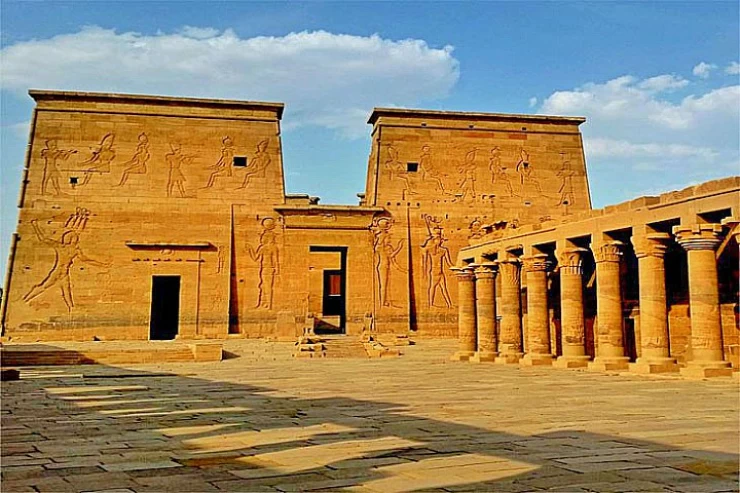
Abydos Temple of Osiris
The Abydos Temple of Osiris is situated in a historically significant area known as a town, which played a crucial role in ancient Egyptian civilization, akin to a prominent archaeological site. Historically, the Ancient City of Abydos was referred to as the "Abdo" temple, a name that was later adopted by the Greeks. The temples in Abydos were constructed by various pharaohs, including King Pepi I, King Ahmose I, King Seti I, and King Rameses II.
The Temple of Seti I, one of the prominent structures in Abydos, is dedicated to the Egyptian deity Osiris, who is associated with the afterlife and the underworld. The ancient Egyptians held the belief that this temple marked the burial site of Osiris. It was built during the reign of King Seti I and later completed by his successors, Rameses II and Merenptah, his son and grandson.
The design of the Temple of Seti I is distinctive, featuring a layout resembling an inverted letter "L." It also houses one of the most comprehensive lists of Egyptian kings and rulers, alongside representations of the ancient Egyptian gods.
The Nile Valley is home to seven shrines, each dedicated to a distinct deity: Seti I, revered as a deified king, along with Horus, Amon Ra, Isis, Osiris, Ptah, and Ra Hor Akhty. Within the temple, one can observe some of the most well-preserved painted friezes and inscriptions, dating back to the Eighteenth Dynasty of Egyptian history. The earliest rulers of Egypt, including those from the First Dynasty, are interred in this city.
Access to the Temple of the city is granted through a largely dilapidated pylon and two expansive courtyards, constructed by King Seti I’s illustrious son, Rameses II, during the New Kingdom period. The original hypostyle hall was also established by Rameses II, featuring reliefs that depict the king making offerings to the deities and overseeing the temple's construction.
Proceeding into the second hypostyle hall, one encounters twenty-four papyrus columns made of sandstone; this section was the final area of the temple to be adorned by King Seti I, who passed away before its completion.
At the rear of this second hypostyle hall, there are sanctuaries dedicated to each of the seven deities: Isis, Horus, Ra-Horakhty, Osiris, Amun-Ra, Ptah, and Seti I. These sanctuaries lead to chambers dedicated to the goddess, her consort, and their child, Isis and Horus, as well as Seth. Additionally, a series of chambers were reserved for the mysteries associated with the goddess and Isis. Sacred boats were housed within the hall, which also included a sacrificial area where animals were slaughtered for rituals or offerings to the gods. Adjacent to this area is a passageway known as the gallery of the kings, adorned with carvings of Rameses II and a meticulously detailed list of other pharaohs.


















